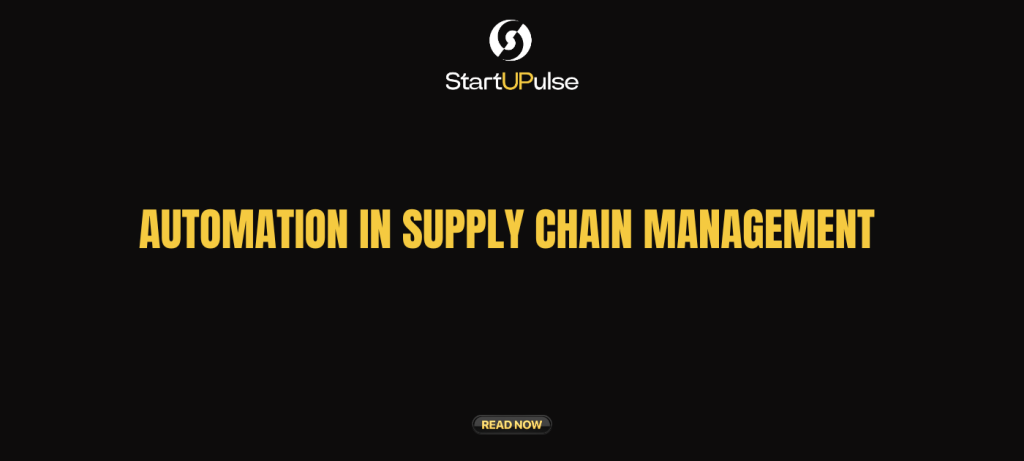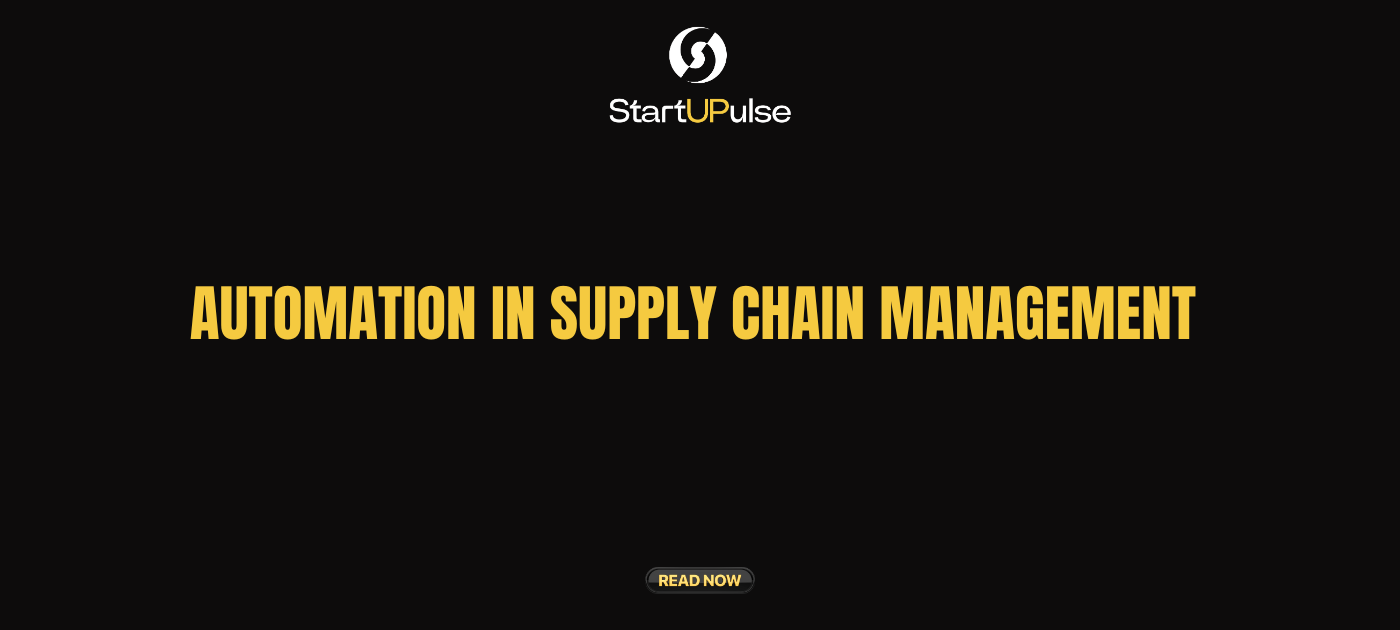
Supply chain management has always been a complex and integral part of any business, linking suppliers, manufacturers, warehouses, distribution centers, and customers. In recent years, the demand for more agile, efficient, and resilient supply chains has accelerated, driven by factors such as global disruptions, labor shortages, and growing consumer expectations for rapid delivery. Enter automation in supply chain management—a transformative approach that leverages technology to streamline processes, improve accuracy, and enhance overall supply chain performance.
From robotics and artificial intelligence (AI) to the Internet of Things (IoT), automation is empowering businesses to build smarter, faster, and more responsive supply chains. Let’s explore the key applications of automation in supply chain management and its impact on business operations.
Key Applications of Automation in Supply Chain Management
- Inventory Management and Demand ForecastingInventory management is a critical component of supply chain success. Automated systems, powered by AI and machine learning, can monitor inventory levels in real time, optimize stock quantities, and predict future demand. By analyzing past sales data, seasonality, and market trends, AI-driven demand forecasting helps businesses maintain optimal inventory levels, reducing the risks of overstocking or stockouts.
- Example: Walmart uses machine learning algorithms to analyze sales data and weather patterns, predicting demand for specific items and ensuring the right stock levels at each store.
- Warehouse AutomationModern warehouses are becoming increasingly automated, incorporating robotics, automated storage and retrieval systems (AS/RS), and autonomous guided vehicles (AGVs). These technologies improve picking and packing efficiency, reduce human errors, and enhance worker safety. Automated warehouses can also operate around the clock, significantly increasing throughput and reducing operating costs.
- Example: Amazon’s use of Kiva robots in its fulfillment centers has sped up the picking process, allowing the company to fulfill orders more quickly and with fewer errors.
- Automated Transportation and LogisticsAutomation in logistics, including autonomous delivery vehicles, drones, and route optimization algorithms, is enhancing last-mile delivery efficiency. Autonomous vehicles and delivery robots are transforming the way goods are transported from distribution centers to end consumers. Additionally, real-time tracking and route optimization ensure timely deliveries and reduce fuel costs.
- Example: FedEx and UPS have both tested autonomous delivery drones to improve last-mile delivery efficiency, particularly in rural or hard-to-reach areas.
- Quality Control and Defect DetectionAutomation can also play a critical role in quality control, especially in manufacturing and warehousing. Computer vision and machine learning algorithms can inspect products for defects in real time, ensuring that only high-quality goods make it to customers. This reduces the risk of returns and enhances customer satisfaction.
- Example: Tesla uses AI-powered cameras to detect potential defects in parts as they move through the assembly line, minimizing product recalls and improving quality assurance.
- Automated Supplier and Vendor ManagementManaging relationships with suppliers is essential for maintaining an efficient supply chain. Automated systems streamline supplier communication, order processing, and performance tracking. By using AI to monitor supplier reliability, delivery times, and quality, businesses can make data-driven decisions on supplier selection and adjust procurement strategies when needed.
- Example: General Electric (GE) uses AI to track supplier performance, ensuring consistent quality across its supply chain and optimizing procurement processes.
- Data-Driven Insights and Predictive AnalyticsAutomation is transforming data management by centralizing supply chain data from various sources and generating actionable insights. Predictive analytics tools can anticipate potential disruptions, allowing businesses to take proactive measures. Automated systems can assess factors like supplier reliability, seasonal demand changes, and geopolitical risks, equipping businesses with foresight to adapt accordingly.
- Example: IBM’s Watson Supply Chain uses AI to predict and mitigate supply chain disruptions, such as natural disasters or transportation issues, helping businesses to maintain smooth operations.
- Customer Service and Returns ManagementAutomation in customer service, such as AI chatbots and automated return systems, improves the post-purchase experience. Automated return systems can manage returns seamlessly, guiding customers through the process and generating real-time updates on return statuses. This enhances the customer experience and maintains brand loyalty.
- Example: Companies like Zappos use AI-driven customer service tools to handle return requests and inquiries efficiently, improving the overall customer experience.
Benefits of Automation in Supply Chain Management
- Increased Efficiency and Cost SavingsAutomation streamlines repetitive tasks, such as data entry, inventory checks, and shipment tracking, reducing the need for manual labor. This not only saves time but also cuts costs associated with human error and redundant processes. Automated processes can achieve in seconds what would otherwise take hours or days, leading to significant operational efficiencies.
- Enhanced Accuracy and Data IntegrityAutomated systems improve accuracy by reducing human errors in critical processes such as order fulfillment, inventory tracking, and shipping. With real-time data synchronization, companies gain a reliable, single source of truth for their supply chain, enabling better decision-making and resource allocation.
- Agility and ResilienceAutomated supply chains are more responsive to sudden changes in demand or unexpected disruptions. Automation tools enable companies to adjust their operations quickly, whether they need to reroute shipments, ramp up production, or find alternate suppliers in the face of delays. This resilience is essential for maintaining continuity in volatile markets.
- Improved Customer SatisfactionBy speeding up order processing, improving delivery accuracy, and offering real-time order tracking, automation enhances the customer experience. Timely, reliable service helps build customer trust and encourages repeat business, a vital asset in today’s competitive market.
- Sustainability and Environmental ImpactAutomation contributes to sustainability by optimizing resource usage, reducing waste, and minimizing energy consumption. For example, route optimization algorithms can reduce fuel consumption in transportation, while efficient inventory management can cut down on waste associated with overstocking.
Challenges of Supply Chain Automation
- High Initial InvestmentImplementing automated systems can be costly, requiring significant investment in technology, infrastructure, and training. Small and medium-sized enterprises may face challenges in accessing the resources needed to implement automation.
- Data Security and Privacy ConcernsWith automation comes the need for robust data security measures. Automated systems handle large amounts of sensitive information, making them potential targets for cyberattacks. Companies must invest in cybersecurity to protect their supply chains from potential breaches.
- Technical Complexity and IntegrationIntegrating automated systems with existing software and processes can be complex, particularly for legacy systems. Businesses may encounter technical challenges when trying to align new automation technologies with their current infrastructure.
- Workforce AdaptationAutomation may lead to changes in workforce requirements, necessitating employee retraining and skill development. Workers may need to transition from manual tasks to overseeing and maintaining automated systems, creating a need for ongoing education and adjustment.
Conclusion
Automation is reshaping supply chain management, offering businesses the ability to streamline processes, reduce costs, and enhance resilience. Although the transition to automated systems involves challenges, the benefits—such as improved efficiency, agility, and customer satisfaction—are undeniable. As technology continues to advance, businesses that embrace automation in their supply chains are well-positioned to thrive in a dynamic, competitive landscape.
Explore Supply Chain Innovations with StartUPulse
At StartUPulse, we are committed to helping startups and established businesses alike navigate the evolving landscape of supply chain management. Our community connects industry leaders, innovators, and entrepreneurs who are passionate about leveraging technology to build sustainable, efficient supply chains. Join StartUPulse today to stay informed on the latest trends in automation and beyond, and discover new strategies to optimize your business operations for the future.
















